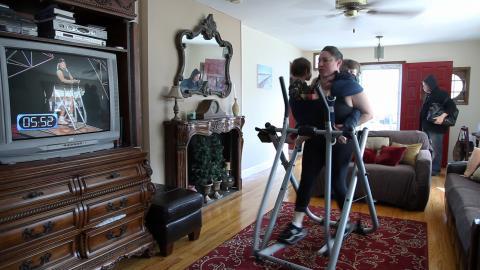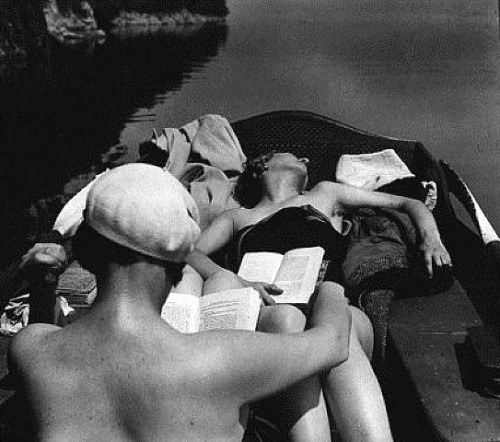Home Truths:
The Home Truths exhibition aimed to challenge societies perception of 'motherhood' and what exactly means to be a mother in today's day and age. The exhibition was made up by the work of eight contemporary photographers- Janine Antoni, Elina Brotherus, Elinor Carucci, Ana Casas Broda, Fred Hüning, Leigh Ledare, Katie Murray and Hanna Putz. The photographs addressed issues such as gender roles, domesticity, the body and the identity of the individual in a family unit.
Fred Huning
Fred Huning- 'Einer'
One of pieces which I found really touching was done by German photograph Fred Huning- a father, not a mother. Huning's work consisted of three small books which documented the journey of Huning and his wife, through their love and loss combined with tragic family events. 'Einer' tells the story of the birth and death of their first child and the struggle which followed as they try to cope with their loss. 'Zwei' shows the couple's healing process, in their attempts to rebuild their relationship and Huning's wife discovers she is pregnant again. And lastly, 'Drei' is the celebration of new life and love as the family is once again made whole by the arrival of their second son.
This piece really touched me, and I felt almost connected to the artist as he shares a massive part of his life with the viewer, it is hard not to. The photographs seem like everyday moments and events that should be documented which again makes me feel a lot more connected to the work.
Katie Murray
'Gazelle'
The second piece which I found completely refreshing was the piece done by American photographer Katie Murray. 'Gazelle' is a video which showcases the artists attempts to get in shape. After the birth of her second child, Murray set out to lose weight by using the Gazelle- a total body workout machine she bought in a garage sale. Fearing that she may harm one of her children whilst they run around the living room, Murray decided the only logical answer was to strap two children to her back and front. All whilst the voice of Tony Little- America's Personal Trainer, shouted out 'motivational' clichés. The video also kept cutting between a nature footage of a mother Gazelle suckling her young and escaping an attack by a pair of cheetah cubs, another concept of the video which made it all that much more 'exciting'.
Murray's piece had a very simple concept but it represented a struggle that many mother's face in today's society- the attempt to balance the demands of a wife, mother and also an artist all at the same time. I thought this piece was not only amusing but also very inspiring in that it shows, that women are always under constant pressure to look a certain way, and mother's are no exception.
Jacques Henri Lartigue: Bibi
The exhibition Bibi showcased the journey of Lartigue and his first wife Madeleine Messager- Bibi. Lartigue's photographs are presented in chronological order and divided into three sections. Starting off in 1918 when he met his future wife Bibi, the exhibition ends in 1930 the year before the couple's divorce. The years in between capture the young couple enjoying their life of travelling both alone and with friends.
In the first section includes Lartigue's wedding and the birth of their only son Dani, the second section beginning in 1922, when the couple slowly become part of the bustling scene of art and high society in Paris- an image of Bibi on a boat in Cannes. Up until that point Bibi was Lartigue's muse and was always the subject of his photographs. In the third section however, that , the couple's distance is clearly witnessed. Bibi is no longer the main subject in Lartigue’s photographs; instead, she is often in the background, represented with other women or in the middle of a crowd.
Bibi et Michèle Verly, Lac d’Aix-les-Bains, mai 1928
This is one of my favourite photographs from the exhibition. I found this image to be very calming and it shows the cheap thrills of the era. One woman completely lost in her book, whilst the other naps letting the sun warm her skin. To me, this would be a perfect way of a spending a summer day and it gives you a great insight on how Jacques and his wife spent their time.






